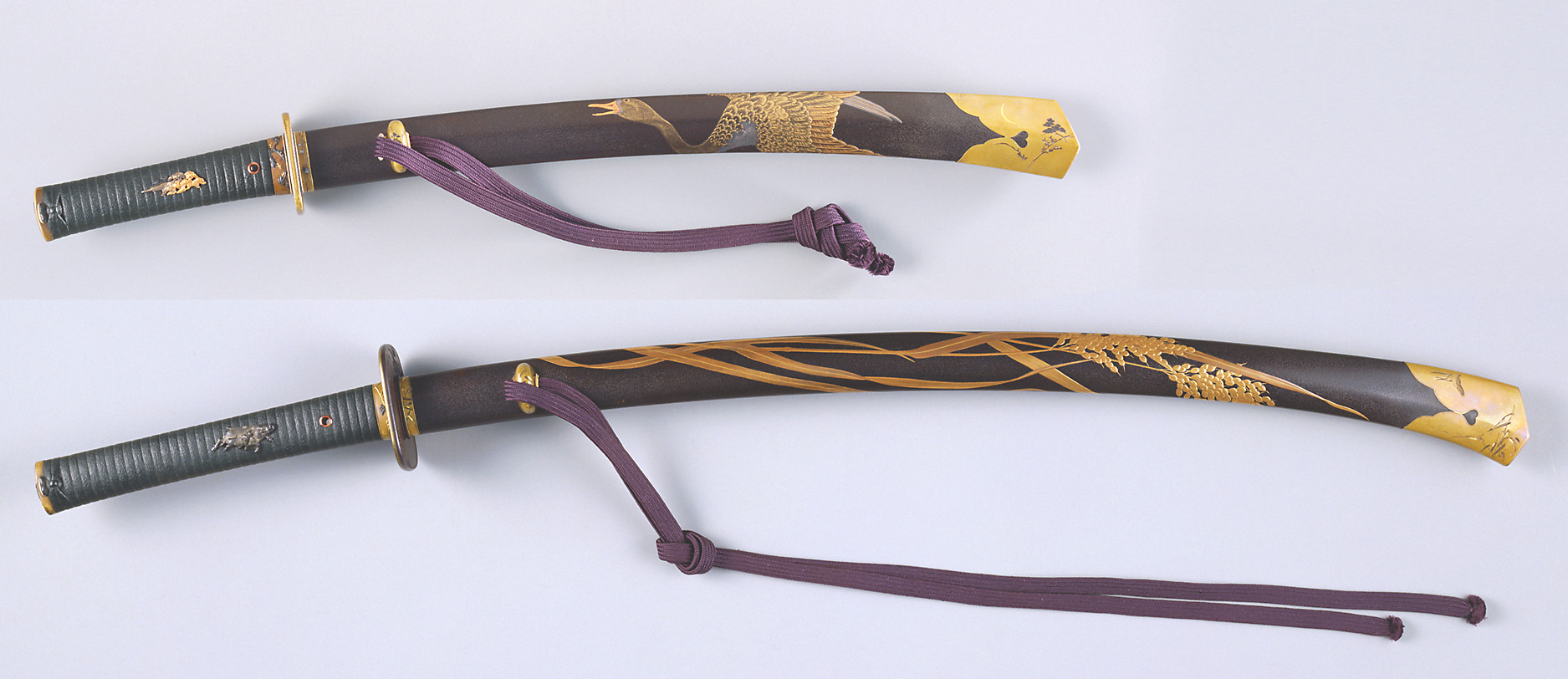'The World of Edo Dandyism: From Swords to Inro" at the Nezu Museum is a splendid collection of Edo Period (1603-1868) swords and sword accessories that includes blades, scabbards and metal fittings, as well as decorative sets of inrō (pill boxes) and netsuke (carved toggles). The exhibition looks back to a fascinating period of Edo history when prosperous samurai and merchants sought out the most stylish outfits and accessories that would establish them as refined men.
The attention to detail involved in the creation of these swords and accessories was analogous to the emphasis Western dandies of the same era placed on elaborate clothing and decorative embellishments. What distinguished the Japanese sensibility, however, was its aesthetic focus on seasonal elements, such as fanciful depictions of flowers, animals and mythical stories. Scabbards, swords and metal fittings were decorated with motifs that included depictions of ears of rice, wild geese in flight, tigers and dragons.
What led to these elaborate decorative practices? The Edo Period was a time of extended peace that lasted more than 250 years and witnessed the rise of a thriving urban culture. The Japanese sword, which represented the soul of the samurai, was no longer needed as a utilitarian weapon, and so it became an expensive ornamental object to be worn with pride, but never used in battle. For the stylish Edo samurai, swords and accompanying accessories embellished in silver and gold were the key distinguishing features of their outfits, representing both high social status and personal refined sensibilities.



















With your current subscription plan you can comment on stories. However, before writing your first comment, please create a display name in the Profile section of your subscriber account page.